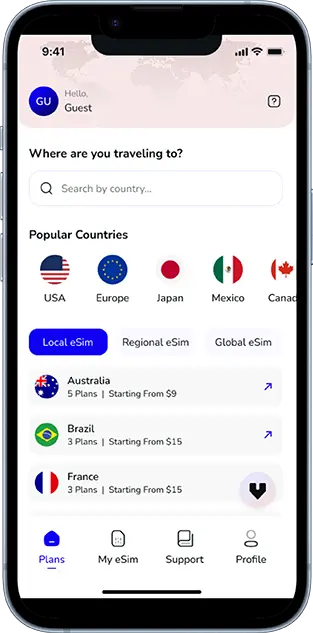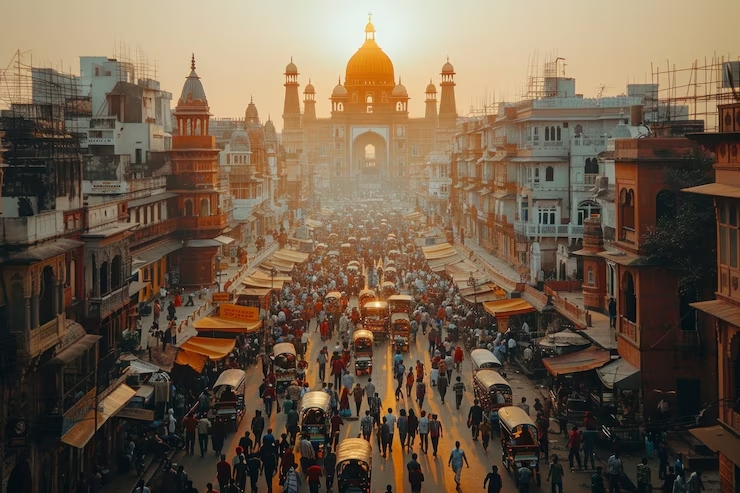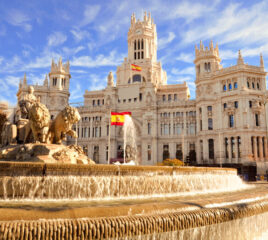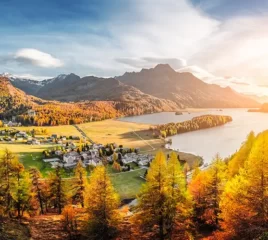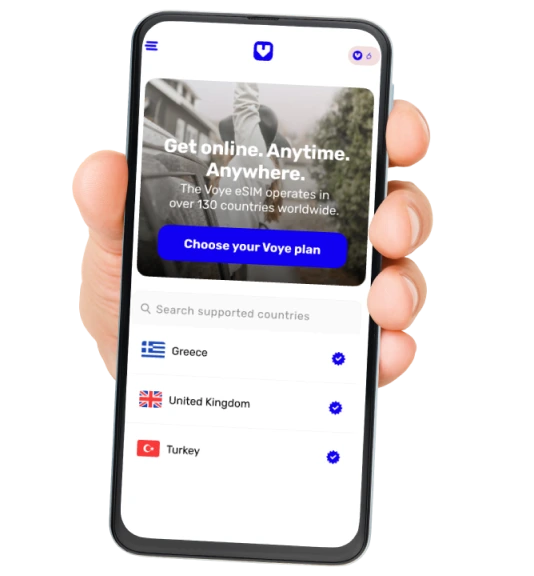Note that iPhone devices from Mainland China aren’t eSIM compatible. Also iPhone devices from Hong Kong and Macao aren’t compatible (except for iPhone 13 Mini, iPhone 12 Mini, iPhone SE 2020 and iPhone XS)
The global pandemic not only paused international travel but deeply transformed the way we journey—both outwardly and inwardly. As borders reopened and communities healed, one type of travel made a profound comeback: the post-pandemic pilgrimage. Across continents, millions are returning to sacred paths, not just for religious rituals, but for healing, gratitude, and rediscovering purpose.
In this comprehensive guide, we explore:
- The spiritual and cultural resurgence of pilgrimages
- How post-pandemic travel has changed sacred journeys
- Top pilgrimage sites around the world
- Health, safety, and planning tips for modern pilgrims
- The rise of eSIM and tech in spiritual travel
Let’s walk the path where faith meets resilience.
Why Pilgrimage Travel Is Surging After the Pandemic
1. A Deeper Need for Meaning
After months of isolation, loss, and uncertainty, people seek something deeper than sightseeing. Pilgrimages offer:
- Reflection and healing after grief
- A reset for mental health and priorities
- A chance to connect with divine purpose
2. Rise of Slow and Soulful Travel
With overtourism under scrutiny, pilgrims are embracing:
- Walking trails over crowded buses
- Spiritual retreats over luxury hotels
- Local culture and simplicity over extravagance
3. Post-COVID Gratitude Journeys
Many travelers are making vows or fulfilling prayers:
- Thanking deities for survival or recovery
- Honoring lost loved ones
- Seeking spiritual renewal after illness
Stay Spiritually Connected, Instantly
Embark on your pilgrimage without worrying about SIM swaps or roaming fees.
Top Post-Pandemic Pilgrimage Destinations
1. Camino de Santiago, Spain
Why It’s Popular: A centuries-old pilgrimage across northern Spain, the Camino now welcomes spiritual seekers, nature lovers, and mindfulness travelers alike.
Post-Pandemic Tip: Routes like the Camino Francés or Camino Portugués now offer digital pilgrim passports and contactless accommodations.
Connectivity Tip: Stay connected with an eSIM for Spain to access trail maps, book albergues, stream meditations, and share daily reflections online without worrying about roaming costs.
2. Kashi Vishwanath & Varanasi, India
Why It’s Powerful: India’s spiritual capital, Varanasi, became a focal point of mourning and hope during the pandemic. The Ganges Ghats and Kashi Vishwanath Temple now draw pilgrims for both redemption and gratitude.
Post-Pandemic Rituals: Ash immersion ceremonies, wellness retreats, and chanting sessions for departed souls.
Travel Tip: Use an eSIM for India to navigate local transport, access cultural guides, and stay connected during your sacred riverside experiences in one of the world’s oldest cities.
3. Mecca, Saudi Arabia
Why It’s Sacred: For Muslims worldwide, performing Hajj or Umrah is a once-in-a-lifetime spiritual duty. Post-COVID, pilgrim numbers are increasing steadily with health guidelines in place.
COVID-Era Reforms: Digital Hajj permits, health checks, and regulated entry systems ensure safety and serenity.
Connectivity Tip: Using an eSIM for Saudi Arabia allows instant access to official apps like Tawakkalna, navigation for rituals, emergency contacts, and spiritual content — all without swapping SIM cards.
4. Lourdes, France
Why It’s Unique: This Catholic pilgrimage site, where healing waters are believed to have divine properties, is experiencing a revival among those recovering from trauma or illness.
Post-Pandemic Focus: Quiet contemplation, candle-lit vigils, and therapeutic retreats have become central.
Local Insight: Activate an eSIM for France to book healing sessions, access multilingual guides, and stay in touch with loved ones while immersed in this holy sanctuary.
5. Shikoku 88 Temple Pilgrimage, Japan
Why It’s Transformative: A 1,200-kilometer circular trail through 88 temples offers a meditative walking experience through serene Japanese landscapes.
Pandemic Era Appeal: Solitude, nature, and non-crowded paths are a huge draw for mindful travelers post-pandemic.
Modern Help: With an eSIM for Japan, pilgrims can access temple information in English, stay safe with live navigation, and book peaceful ryokan stays — even in remote areas.
Trends Shaping the New Age of Pilgrimage
1. Digital Pilgrimage Planning
Travelers are now using:
- Digital pilgrimage passports (like on Camino de Santiago)
- Booking apps for temple stays or meditation sessions
- Virtual guided meditations en route
2. Eco-Spiritual Journeys
Pilgrims prefer:
- Walking, cycling, or train travel over flights
- Carrying zero-waste kits
- Supporting local and organic food stalls near temples
3. Interfaith Travel
Pilgrimages are no longer exclusive to religion. People walk:
- To explore world spirituality
- To understand different faiths
- To find peace without dogma
Example: A Buddhist might walk the Camino for introspection; a Christian might explore Bodh Gaya out of curiosity.
Technology & Connectivity in Spiritual Travel
The Role of eSIMs in Post-Pandemic Pilgrimage
In this digital age, even pilgrimages need connectivity—for safety, navigation, and sometimes, solitude through silence apps.
Why eSIMs are helpful:
- Avoid physical SIM swaps at sacred borders
- Instantly activate plans on your phone
- Stay connected in remote areas for emergencies
- Use guided pilgrimage apps and meditation streams
Whether you’re hiking the Himalayas or live-streaming Friday Mass from Lourdes, a reliable eSIM ensures you stay present, safe, and reachable.
Health & Safety Tips for Post-Pandemic Pilgrims
- Verify Entry Requirements
- Check vaccination or testing rules (especially for Mecca, Bhutan, etc.)
- Choose Low-Crowd Seasons
- Visit off-peak for a safer and more introspective journey
- Mask When Needed
- In high-traffic temple zones, wear masks if asked
- Keep Sanitizers and Digital Payment Options
- Many sacred sites moved to contactless donation systems
Essential Packing Checklist
| Item | Why It’s Needed |
|---|---|
| Lightweight Shoes | Long walks, rough terrain |
| Reusable Water Bottle | Stay hydrated sustainably |
| eSIM-enabled Phone | For maps, apps, emergency calls |
| Travel Prayer Journal | Record reflections and dreams |
| First Aid Kit | Especially for solo or remote paths |
| Modest Clothing | Respect cultural dress codes |
| Portable Charger | Ensure devices don’t die during spiritual moments |
Sustainable Pilgrimage Travel Practices
- Support local guesthouses over chain hotels
- Buy artisan religious souvenirs instead of mass-produced ones
- Leave no trace—respect the path, the place, and fellow pilgrims
- Volunteer on the trail (e.g., help clean a trail in Shikoku or cook at Camino hostels)
Pilgrimage as a Form of Healing
Post-pandemic pilgrimage is not just a religious ritual—it’s therapy.
Healing for:
- Grieving Families: Walking the path to accept loss
- Frontline Workers: Seeking peace after burnout
- Survivors: Thanking God or the universe
- Mental Health Seekers: Resetting in solitude
The Future of Pilgrimage Travel
As the world rebuilds emotionally and spiritually, pilgrimages will likely:
- Become longer and slower experiences
- Combine faith, culture, and self-care
- See more solo female pilgrims
- Integrate sustainable tech and wellness
This is not a return to old traditions—but a reinvention of them.
Final Thoughts: Why You Should Consider a Post-Pandemic Pilgrimage
In 2025 and beyond, pilgrimage isn’t just for the religious—it’s for the resilient. It’s about:
- Gratitude
- Grief
- Growth
- Grace
If you’re seeking clarity, closure, or simply a quiet path to walk—this is your sign.
FAQs: Post-Pandemic Pilgrimage
Q1: Do I have to be religious to go on a pilgrimage?
No. Many undertake pilgrimages for personal growth, healing, or cultural curiosity.
Q2: Are pilgrimages safe post-COVID?
Yes—most destinations have strict safety protocols, especially in Mecca, Lourdes, and Varanasi.
Q3: What tech should I carry?
An eSIM-ready smartphone, digital maps, and a secure payment method are enough.
Q4: How do I choose a destination?
Follow your faith, your roots, or your calling. Ask: “Where will I feel most awake?”
Q5: Can I do a pilgrimage solo?
Absolutely. Solo spiritual travel is on the rise and often more profound.
Sacred Journeys Deserve Seamless Connectivity
Experience uninterrupted maps, meditation apps, and safety alerts while you walk.
Seamless Mobile Data Everywhere
